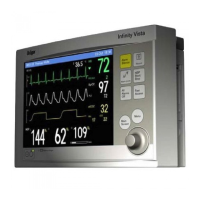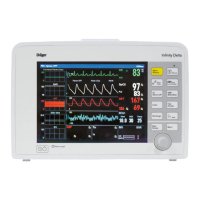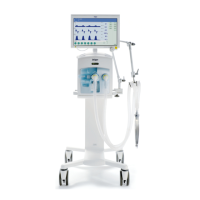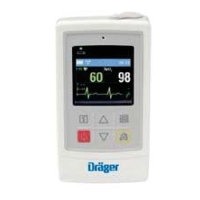9-2 DELTA/DELTA XL/KAPPA VF8
9 A
RRHYTHMIA MONITORING
Overview
Arrhythmia monitoring is available for adult and pediatric patients. The mode you
select (Full, Basic, or OFF) determines the events processed. Full arrhythmia is a
locked option which must be activated by your hospital’s technical personnel.
Arrhythmia monitoring is not available for neonates. Arrhythmia monitoring is only
available for adult and pediatric patients.
The monitor matches incoming beats against beats previously recorded and stored in a
reference template. Through this process, the monitor can verify an arrhythmia
event’s occurrence, classify it, and draw clinically useful conclusions based on the
frequency and morphology of the signal. The monitor considers all beats questionable
if a baseline shift exceeds specified limits.
The monitor uses the results of QRS processing for arrhythmia analysis. During
multiple-lead arrhythmia processing, each lead’s QRS complexes are measured and
compared against its learned dominant normal beat. The monitor classifies beats based
on information acquired from all available leads.
WARNING: Do not rely solely on ECG with seizure-prone
patients. Electrical artifacts of non-cardiac origin, such as
seizure, may prevent detection of certain arrhythmias.
NOTE: Arrhythmia detection may not work properly in all patients. The monitor
classifies only QRS complexes >
0.20 mV, for widths > 70 ms. An artifact condition
(
ARTF) may occur when the ECG signal does not meet these minimums. While
continuing to monitor HR, you can turn off ARR monitoring for patients whose QRS
complexes do not meet these minimums.
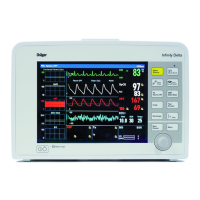
